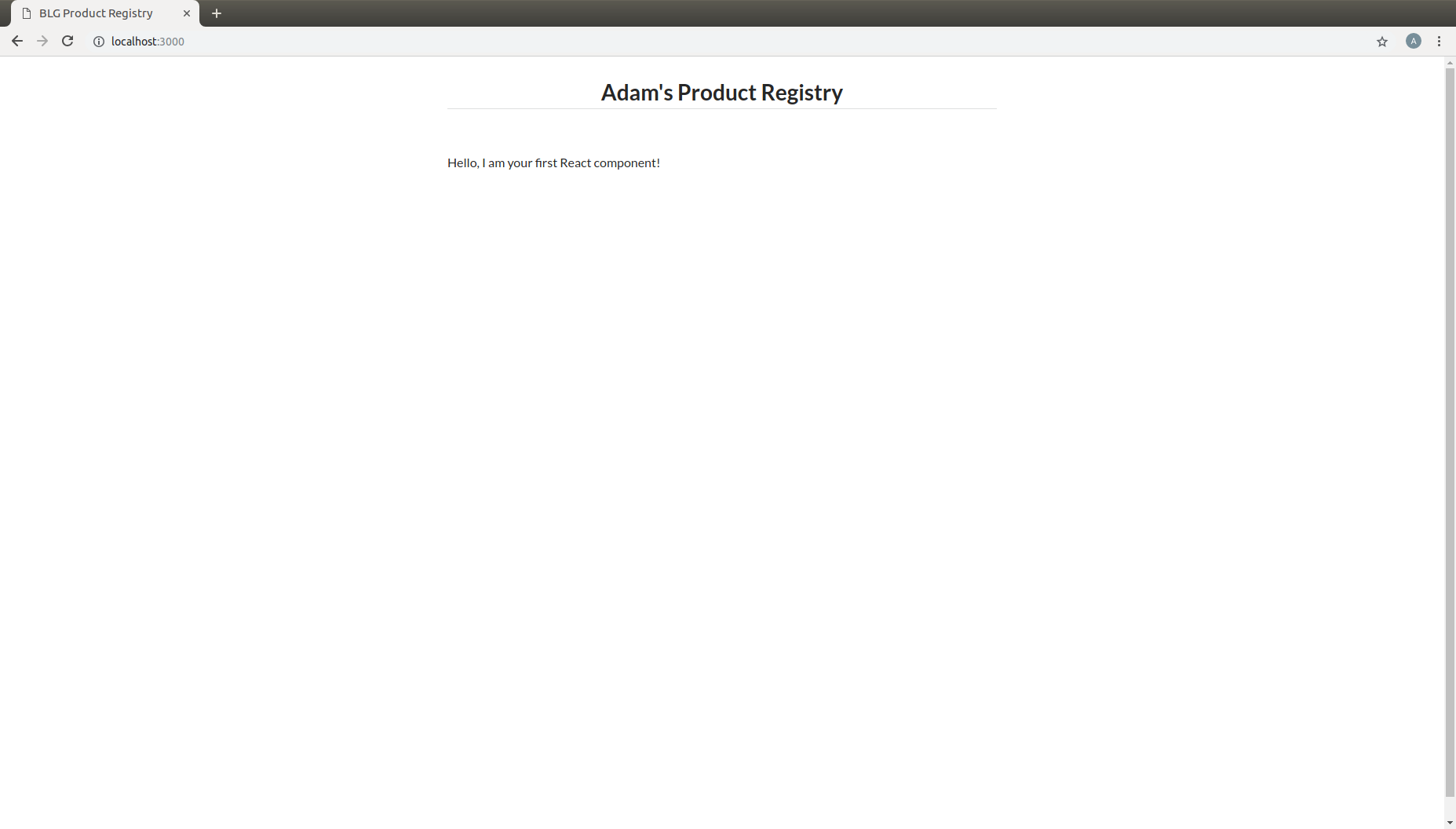3. Your First Component!¶
Note
Components
- React components are entirely comprised of components. A component can be thought of as a UI element within an application, generally within your browser.
- Components may be thought of as small self contained building blocks that may effectively be reused and combined within other to build up complete applications.
- The layout, logic, and specific styles are all housed within the given self-contanied component.
Taking a look into app.js and a first component¶
The remainder of coding for this exercise will occur in the
app.jsfile. Go ahead and open that one up in the Sublime text editor.It should contain the following component:
class ProductRegistry extends React.Component { render() { return ( <div className='ui unstackable items'> Hello, I am your first React component! </div> ); } }A React component is simply a JavaScript class, one which extends, or inherits from, the base React Component class
The
Reactobject is availble globally as theReactlibrary was in fact linked in the<head>of theindex.htmlfile:<script src="libraries/react.js"></script>The class, which we will refer to as a component moving forward,
ProductRegistryhas only a single function,render(). This is a required function and is used to determine what the component will render within the browser.However, the return value doesn’t look like traditional JavaScript, and you are right as we are actually using
JSX (JavaScript eXtension syntax), an extension for JavaScript. JSX allows us to write the markup for our component views in a familiar, HTML-esq syntax.Note the familiar looking
<div>section within the return statement. These are the elements that will be rendered in the browser.Also note that although this file is now linked in your
index.htmlit is not currently displayed in the browser. The text “Hello, …” is not present
Rendering your component¶
You now have your first component defined and it is even linked in your
index.htmlfile… but it is not being rendered on the page… let’s fix that.<script src="app.js"></script>Remember that content
<div>? Yes, we want to render our JSX component within that<div>on our page.Add the following lines at the bottom of your
app.jsfile:ReactDOM.render( <ProductRegistry />, document.getElementById('content') );Save the file and have a look at your browser. Is a warm hello from your component present?
Great, you have rendered your first React component!
ReactDOM is a package that the React library provides to essentially allow direct interaction with the elements defined in your
index.html.Above you told React to locate the element on the current page(document) with the id content and to render the
<ProductRegistry />component within it. Telling React what you want to render and where you want to render it, and voila it appeared beneath your title as is defined in yourindex.html.Effectively resulting in the following:
<div> <h1>Product Registry</h1> <div id="content"> <ProductRegistry /> </div> </div>
Important
Understanding Babel and how our browser is able to understand your new JSX component.
Modern browsers’ execution engines do not natively understand the JSX language. JSX is an extension to standard JavaScript, which browsers do understand. We therefore need to translate this JSX code to standard JavaScript so our browser can understand it. Essentially your component is speaking Espanol while our browser only understands English.
Babel is here to solve this problem for us!
Babel is a JavaScript transpiler, or in more familiar English language a translator. Babel understands JSX and is capable of translating your JSX into standard JavaScript. You simply need to instruct the browser to use Babel prior to attemtping to execute the JSX code.
The Babel library has been included in your
index.html:<script src="libraries/babel-standalone.js"></script>Finally the browser may be instructed to use Babel directly where the
app.jsfile is linked in yourindex.html:<script type="text/babel" data-plugins="transform-class-properties" src="app.js" ></script>